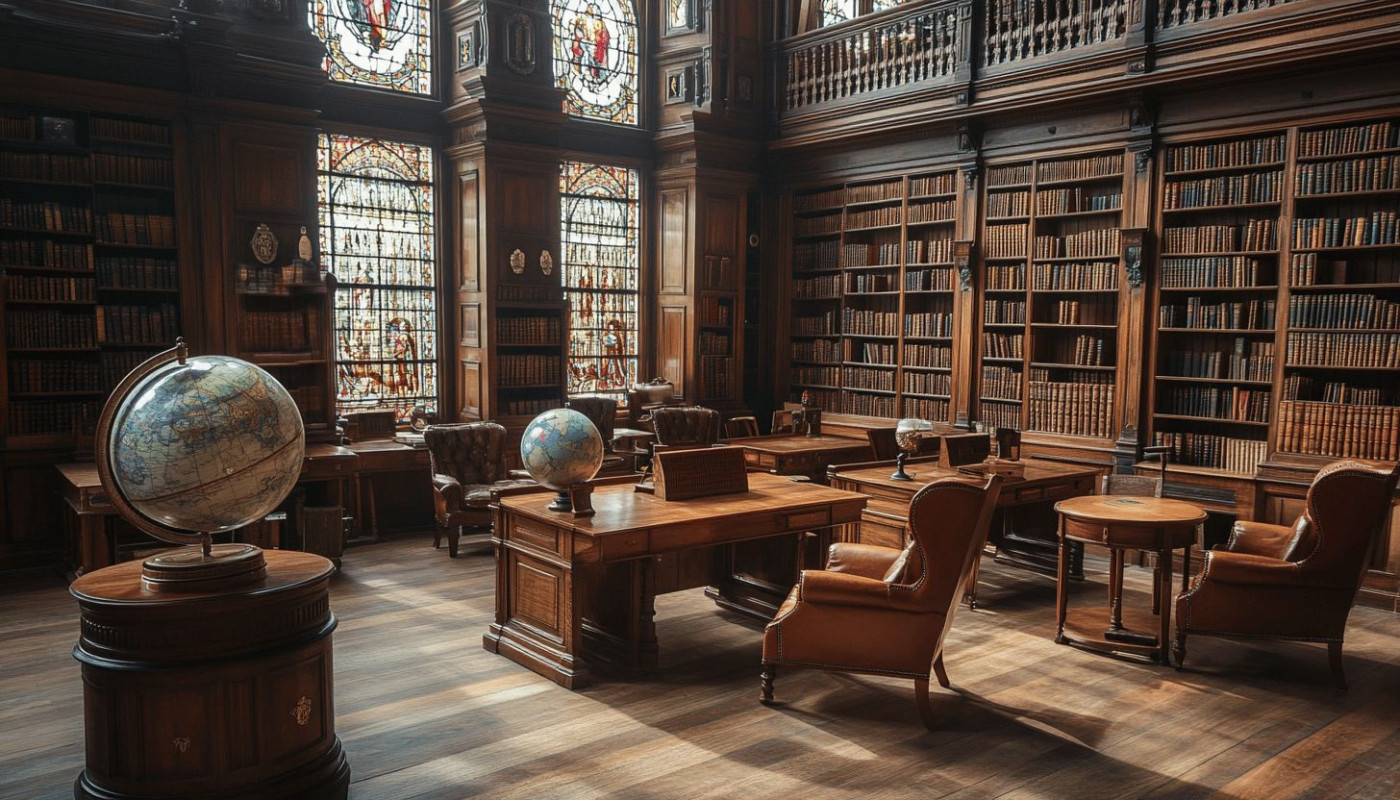Table of contents
Step into a world where the past meets the present, as historical settings in workspaces transform everyday environments into reservoirs of inspiration and creativity. The allure of centuries-old architecture or storied locations brings more than just visual charm; it fosters a unique atmosphere that can enhance productivity and well-being. Discover how integrating history into modern workspaces can unlock new levels of motivation and innovation, and why this growing trend is captivating professionals across industries.
Inspiring creativity and innovation
A historical workspace offers a unique blend of heritage design and creative environment, directly impacting the psychological well-being of employees and nurturing their ability to innovate. Being surrounded by elements that reflect rich cultural and architectural history can serve as cognitive priming, subtly encouraging the mind to make new associations and connections. The presence of intricate moldings, vintage materials, or iconic artifacts creates a sensory-rich ambiance that stimulates curiosity and motivates employees to think beyond conventional boundaries. According to leading workplace psychologists, this architectural ambiance doesn't just decorate a space; it acts as a catalyst that fuels creative thinking and problem-solving. When individuals are immersed in a setting that feels both meaningful and inspiring, the emotional resonance enhances employee inspiration, making it more likely for teams to generate breakthrough ideas and embrace innovation in their daily work.
Enhancing employee well-being
A workspace infused with historical ambiance offers a distinctive approach to employee well-being by leveraging the inherent qualities of heritage environments. The presence of natural materials such as wood and stone, often found in preserved buildings, creates a tactile connection to nature that supports mental health. Unique layouts and storied architecture contribute to workspace comfort by breaking away from monotonous, sterile office designs, encouraging movement and curiosity. Sensory experiences, such as textured walls, filtered natural light, and ambient sounds, are central to biophilic design—a technical term describing spaces that connect occupants with nature. The most authoritative voices in environmental psychology emphasize that such connections in historical settings can significantly facilitate stress reduction and foster positive emotional states. This multi-sensory engagement not only elevates mood but also contributes to overall workplace satisfaction, making historical settings a compelling choice for organizations prioritizing employee well-being.
Strengthening corporate identity
Working in a historical office can profoundly reinforce a company's corporate identity and workplace heritage by embedding brand values in both daily routines and broader business narratives. Heritage locations provide an authentic backdrop that communicates tradition, stability, and excellence to employees and visitors alike. Within these storied spaces, the architectural features and preserved elements act as powerful tools of brand signaling, subtly expressing the company's commitment to legacy and quality. This connection with the past fosters a unique company culture, where shared experiences are rooted in something larger than the present moment. Organizations occupying such locations often find that the aesthetic and symbolic resonance of historical settings influences both internal morale and external perception, setting them apart in competitive markets. As a result, historical offices become living embodiments of values and prestige, strengthening relationships and shaping lasting impressions for clients and staff.
Attracting top talent
A historical setting offers a recruitment advantage by elevating the employer value proposition, providing a unique office environment that stands out in a competitive job market. Many organizations recognize that talent attraction depends not only on salary and benefits but also on workplace appeal—a differentiator that creative professionals increasingly prioritize. When a workspace exudes character and legacy, it creates a sense of inspiration and purpose, making it an attractive destination for individuals who value a stimulating atmosphere for their work. This environmental differentiation can significantly contribute to staff retention, as employees are more likely to remain loyal to an employer who invests in distinct and meaningful surroundings.
For companies in creative industries, adopting a historical setting can amplify the employer brand, signaling commitment to both tradition and innovation. A unique office in a landmark location often becomes an extension of company identity, enabling organizations to showcase their values during the recruitment process. Candidates seeking inspiration are drawn to spaces filled with architectural heritage, as such environments foster collaboration and fuel ideation—factors especially valued by top-tier professionals. In this way, the workplace appeal of a historical setting becomes a strategic tool in building diverse, high-performing teams.
Organizations looking to benchmark their recruitment advantage can learn from the Best coworking spaces in Austin, which blend historical charm with modern amenities to create inviting environments for talent attraction. These spaces demonstrate how environmental differentiation enhances the employer value proposition and helps attract and retain exceptional professionals in today's competitive landscape.
Promoting collaboration and engagement
Historical design within a shared workspace can significantly enhance workplace collaboration and employee engagement by transforming ordinary environments into communal spaces with unique character. The presence of heritage elements, such as vintage architecture or preserved artifacts, offers a stimulating backdrop that naturally sparks curiosity and dialogue. These distinctive settings foster social cohesion, allowing employees to connect over shared experiences and narratives embedded within the space. As teams gather in these historically rich environments, spatial storytelling becomes a powerful tool. Leaders in workspace design emphasize that a thoughtfully curated atmosphere rooted in history encourages open communication, trust, and a sense of belonging, all of which are foundational for successful team building. These effects combine to create an environment where both formal and spontaneous interactions thrive, helping individuals feel more connected and invested in collective goals.
Similar articles

How Balancing Work And Study Enhances EMBA Outcomes

How Digitized Procure To Pay Enhances Supply Chain Efficiency

How To Enhance Your Corporate Events With Top-notch Audiovisual Equipment

How Outsourcing Key Operations Can Propel Business Growth

How To Boost User Engagement And Retention With An Advanced Product Success Platform

Exploring The Transformative Impact Of AI On Traditional Image Creation Processes

